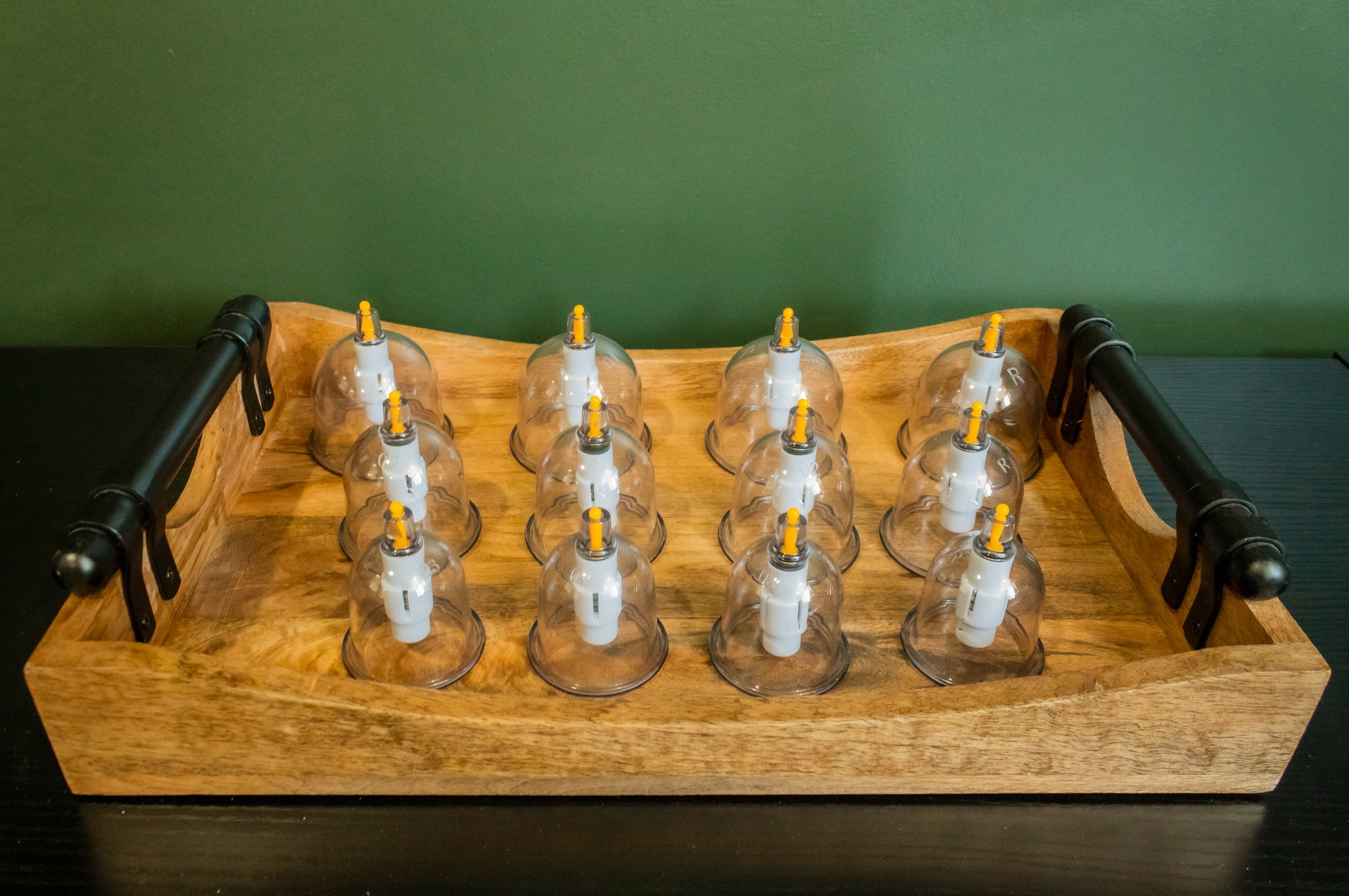
Cupping Therapy
Forget the hype and the pretty circles left on celebrity backs. Cupping is a precise therapeutic technique that uses negative pressure—suction—to lift tissue layers, decompress fascia, and create powerful neurological effects. Unlike pushing into your tissues like massage, cupping pulls tissues upward, creating space, relieving pressure, and boosting circulation in ways other therapies can’t.
Mechanically, cupping creates a vacuum that lifts skin, fascia, and muscle away from deeper structures. This:
Breaks up fascial adhesions
Loosens tight muscles
Increases blood and lymphatic flow
Promotes fresh oxygen and nutrient delivery
Helps flush metabolic waste from stagnant tissues
Neurologically, the suction stimulates dense sensory receptors in the skin and fascia, bombarding your brain with proprioceptive input. This sensory flood:
Decreases pain perception by engaging the nervous system’s gate-control mechanism
Reduces protective muscle guarding
Helps recalibrate how your brain maps and controls movement in that region
Cupping sends a clear message to your brain: “This area is safe. Let it move. Let it heal.”
Your body is a tensegrity system—a web of bones, fascia, muscles, and nerves all distributing tension and compression. Injuries, repetitive strain, and stress cause the fascia to stick, knot, and clamp down, throwing your tensegrity architecture off balance. Cupping decompresses fascial layers, breaking the grip of stuck tissues, restoring the body’s ability to distribute force evenly. It’s why people often feel lighter, looser, and freer after a single session. It’s not magic—it’s physics and neurobiology working together.
Cupping fast-tracks recovery by:
Pulling fresh blood into damaged tissues
Breaking up stagnant metabolic waste
Stimulating collagen production and fascial remodeling
Reducing neural hypersensitivity
Improving range of motion and movement fluidity
It’s like hitting the reset button on a stuck, inflamed, or overloaded system.
Cupping has exploded in popularity thanks to elite athletes, physical therapists, chiropractors, and bodyworkers.
Research shows significant improvements in:
Muscle tightness and soreness
Range of motion
Pain levels in chronic musculoskeletal conditions
Success rates are especially strong for:
Neck and back pain
Myofascial pain syndrome
Shoulder tension
Sports recovery
Trigger point relief
While some still dismiss it as a trend, science is catching up—and the results speak for themselves.

